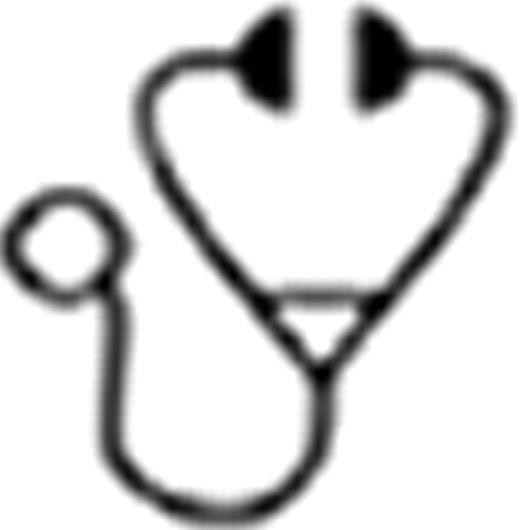Abstract
MGUS counts for the majority of monoclonal gammopathies and can be found in approximately 3% of adults older than 50 years. MGUS progresses to active Multiple Myeloma (MM) at a rate of 1–2% per year, thus imparting an average risk of 25% for progression (PRO) over a lifetime once diagnosed. Unfortunately no single laboratory, molecular or imaging variable can reliably predict PRO. S0120 accrued 363 patients at 69 sites across the US between January 1, 2004 and November 1, 2011, of whom 166 had MGUS and 190 AMM, defined according to IMWG criteria, on whom laboratory, gene expression and imaging studies were collected in a prospective fashion. Here we report the results of imaging studies as predictors of progression.
262 patients with evaluable follow-up were enrolled at the University of Arkansas for Medical Sciences (UAMS) site. MRI and PET-CT studies were performed at baseline and serially thereafter until PRO to symptomatic MM defined by standard variables of M-protein, bone marrow findings and CRAB criteria, according to protocol. Lab studies were performed at three months, six months and one year after registration, then every 12 months for a total of 5 years from registration as well as within 14 days of decision to discontinue observation or within 14 days of progression. MRI parameters included the number of focal lesions (FL) recognized by short TI inversion recovery (STIR) analysis of the axial bone marrow along with an account of bone marrow background intensity compared to adjacent muscles (hypo-, iso-, hyper-intense). PET-CT parameters included number of FDG-avid focal lesions (PET-FL), SUVmax of PET-FL, presence of extra-medullary disease (EMD) as well as the FDG avidity score at L5 (SUV-L5). Evaluable baseline MRI and PET studies were available for 235 and 224 patients, respectively.
In the 262 eligible patients enrolled and followed at UAMS, the two subgroups of MGUS and AMM differed by definition in M-protein and bone marrow plasmacytosis; in addition, IgA subclass and Hyperdiploidy molecular subgroup were overrepresented in the AMM group. Patients in the AMM group also had higher risk scores defined by the GEP 70-gene risk model (GEP70). At 24 months from study entry, 18.8% of all patients had progressed to MM (25.6% of AMM patients and 8.2% of MGUS patients) and 11.5% had begun MM therapy (15.8% of AMM patients and 4.5% of MGUS patients).
Univariate Cox regression strongly indicated that age ≥ 65, serum albumin <3.5g/dL, B2M >+3.5mg/L, detection of any cytogenetic abnormalities (CA), and suppression of uninvolved light chains were adversely associated with time to PRO. The AMM-constituting features, bone marrow plasmacytosis >10%, M-protein >30g/L, and abnormal K/L ratio also conferred greater hazard of PRO. Risk scores > −0.26 and >1.5 for GEP70 and GEP80, respectively, as well as detection of focal lesions by MRI at baseline carried an elevated HR for PRO. A multivariate Cox regression showed only elevated M-protein, abnormal K/L ratio and GEP70 risk scores > =0.26 to be strongly associated with time to PRO. In the context of this MV model, disease subtype (AMM v MGUS) was insignificant. Inclusion of development of MRI-FL or and PET-FL as time-dependent variables showed that they were associated with time to PRO with HRs of 27.12 and 32.18 respectively. Abnormal K/L ratio and elevated M-protein were lost in this MV model. Analyzing variables linked to initiation of MM therapy, abnormal K/L ratio, elevated BM plasmacytosis, elevated M-protein, GEP70 risk scores >-0.26 as well as detection of MRI-FL at baseline (≥1 FL: HR=4.90; ≥3FL: HR=10.00) were univariately significant. On multivariate analysis, abnormal K/L ratio, elevated M-protein and GEP70 risk scores > – 0.26 were associated with time to treatment for MM. Inclusion of development of MRI-FL or PET-FL as a time dependent variable were associated with time to treatment with HRs of 29.12 and 36.50 respectively.
To our knowledge, this is the first comprehensive effort that has used available imaging modalities along with established laboratory and pathology investigations in an attempt to distinguish features predictive of PRO from MGUS to active MM. In addition to the established “high-risk” MGUS/AMM features, we found that presence of MRI-FL at baseline, presence of CA and GEP70 scores >-0.26 carry a higher risk of PRO.
Shaughnessy:Myeloma Health, Celgene, Genzyme, Novartis: Consultancy, Employment, Equity Ownership, Honoraria, Patents & Royalties. Barlogie:Celgene: Consultancy, Honoraria, Research Funding; IMF: Consultancy, Honoraria; MMRF: Consultancy; Millennium: Consultancy, Honoraria, Research Funding; Genzyme: Consultancy; Novartis: Research Funding; NCI: Research Funding; Johnson & Johnson: Research Funding; Centocor: Research Funding; Onyx: Research Funding; Icon: Research Funding.

This icon denotes a clinically relevant abstract
Author notes
Asterisk with author names denotes non-ASH members.

